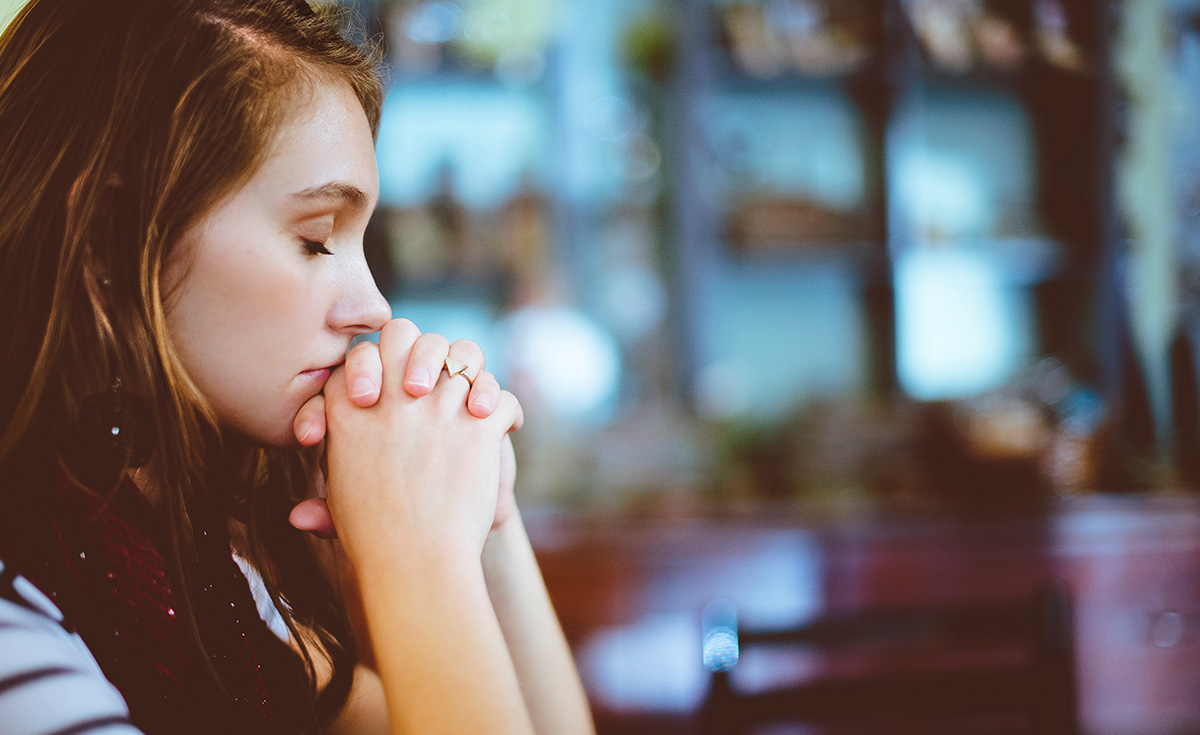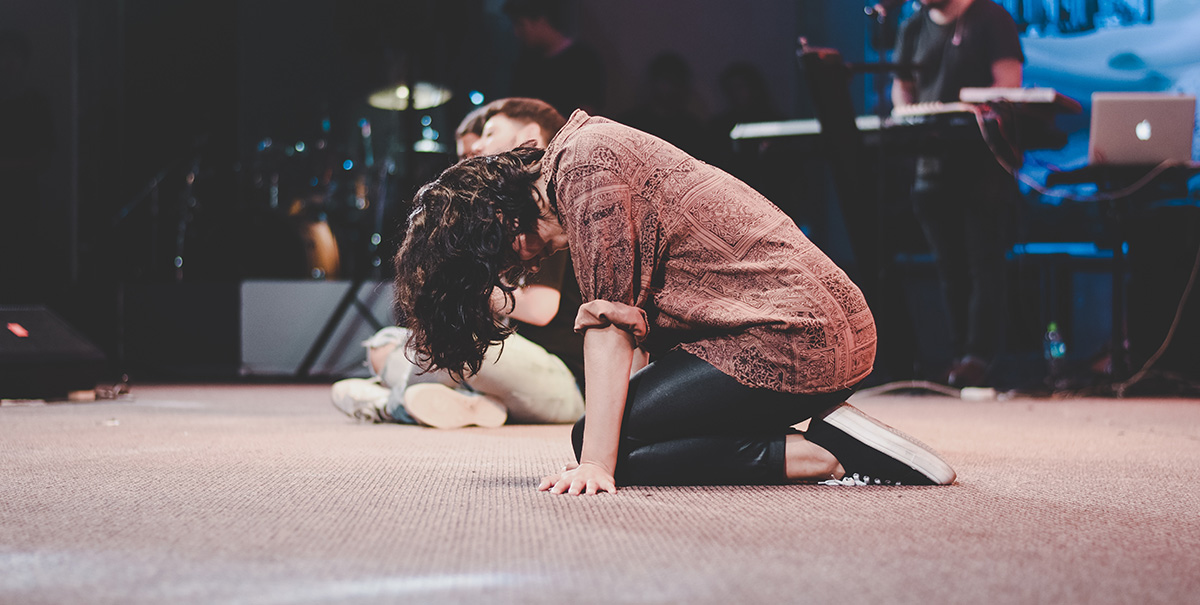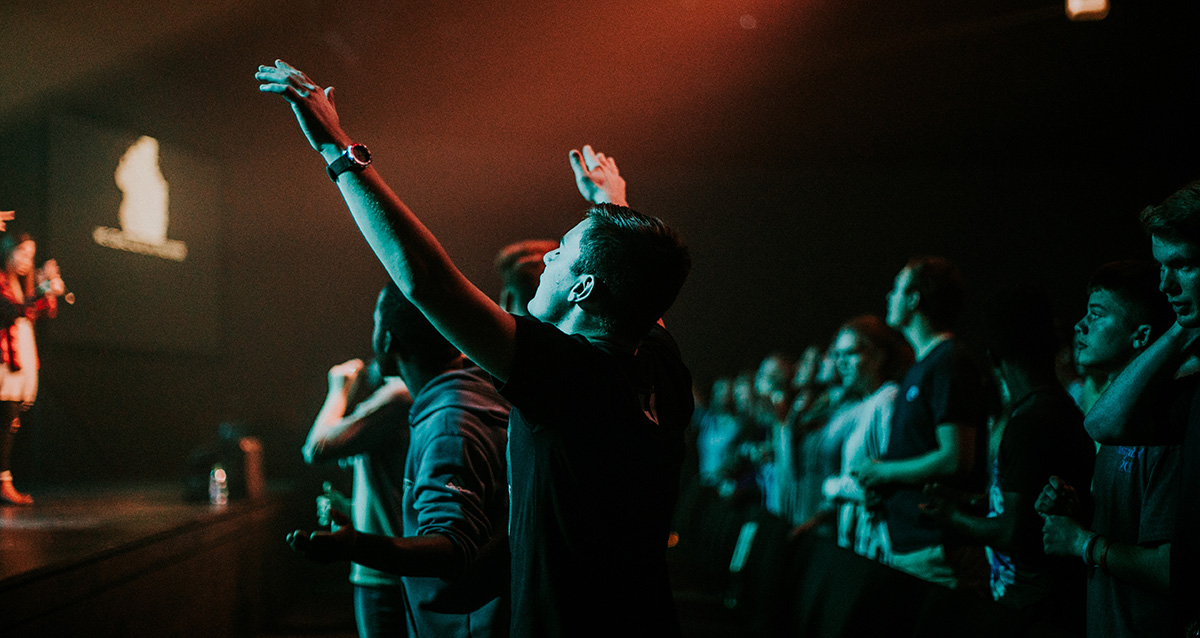Worship is more than the music.
Though the songs we sing are powerful and can get us started in the right direction, true and authentic worship is more so about the posture of our hearts. When we worship, we are expressing reverence and adoration for the God of the universe – a God that is closer than our breath, who desires to know us intimately, and who knows our every thought. When we worship, we stand in awe of who God is.
The wonderful thing about worship is that there are SO many different ways to do this! For some, this might be a walk in nature, reflecting on the beauty of creation and the Creator who made it. For others, using our gifts to serve others is a way we can honor God. For all, tithing and being generous with our money provides an opportunity to worship the God who gives it all.
Prayer, on the other hand, is the ultimate form of worship. It is our lifeline and communion with God. When we pray, we are directly communicating with Him. The following excerpt was posted on the Institute in Basic Life Principles website, and I found it to be influential in the way I pray and worship. I believe it is profound in shaping the way we can posture ourselves during times of worship. Check it out below and enjoy!
The following excerpt was posted on the Institute in Basic Life Principles website, and I found it to be influential in the way I pray and worship. I believe it is profound in shaping the way we can posture ourselves during times of worship. Check it out below and enjoy!
In the Biblical accounts of prayer, many postures are described. God does not require any certain one, but often our posture follows the attitude of our heart. Below are eight postures of prayer, their symbolism and reference verse(s) that can guide you in your prayer as you worship the King of Kings:
Lying Prostrate Before God :: No position symbolizes humility better than being on our faces before God.
It is an acknowledgement of our total unworthiness.
When God made a covenant with Abraham, Abraham recognized his unworthiness before God and “fell on his face” before the Lord. (See Genesis 17:1–22)
It is recognition of the need for God’s mercy.
When the leper came to Jesus for healing, he fell on his face and begged for mercy, saying, “Lord, if thou wilt, thou canst make me clean.” (See Luke 5:12)
Kneeling Before God :: When we repent of our sins, we appeal to the Lord for His mercy and forgiveness.
It acknowledges the Lordship of Jesus Christ.
Kneeling before God provides a visual image of submission to His authority. “One day every knee will bow before God…” (See Philippians 2:9–11)
It is a sign of earnest appeal.
King Solomon knelt when he asked God to bless the Temple and the people of God. (See I Kings 8:54) Elijah knelt in earnest prayer when he asked the Lord to send rain to end Israel’s drought. (See I Kings 18:41–46)
Bowing Before the Lord :: One who bows before God conveys an attitude of honor, gratitude, and faith, acknowledging that all things come from His hand.
It is a sign of reverence.
In some cultures, one who wants to express reverence and respect for another will bow before him. The deeper the bow, the greater the respect he shows.
It is an expression of worship.
When God answered the prayer of Abraham’s servant, the man, “worshiped the Lord, bowing himself to the earth.” (See Genesis 24:52)

Standing Before the Lord :: To stand before a ruler indicates that you have a legal right to be there. It is only through the righteousness of Jesus Christ that we are able to approach God as His children
It represents our position in Christ’s righteousness.
“Therefore being justified by faith, we have peace with God through our Lord Jesus Christ: by whom also we have access by faith into this grace wherein we stand, and rejoice in hope of the glory of God.” (Romans 5:1–2)
It symbolizes our preparation for battle.
“Wherefore take unto you the whole armor of God, that ye may be able to withstand in the evil day, and having done all, to stand. Stand therefore…” (Ephesians 6:13–18)
Sitting Before the Lord :: In Scripture, sitting is a position of authority. When the king or rulers of a city sat in their official places, they were in a position to rule and judge, and to have their judgments carried out.
It reminds us that all believers are seated with Christ in heaven.
We are seated with Christ at the right hand of the Father. (See Ephesians 2:4–7)
It represents God’s call to forgive offenders.
Jesus told His disciples, “If you forgive their trespasses, your heavenly Father will also forgive you…” (Matthew 6:14–15)
Looking Up to Heaven :: Looking a person in the face indicates confidence and honesty. It is indicative of an open, trusting relationship.
It demonstrates where our help comes from.
Looking up to God in prayer serves as a testimony that we are putting our hope in Him and waiting on Him for help. “I lift up my eyes to the hills. From where does my help come? My help comes from the Lord, who made heaven and earth” (Psalm 121:1–2, ESV)
It displays confident faith.
At the tomb of Lazarus, Jesus prayed with faith and thanksgiving before He raised Lazarus from the dead: “… And Jesus lifted up his eyes, and said, Father, I thank thee that thou hast heard me.” (John 11:41)

Stretching Forth the Arm :: The apostle Paul wrote to Timothy: “I will therefore that men pray every where, lifting up holy hands, without wrath and doubting” (I Timothy 2:8). In the Scriptures, the outstretched arm was symbolic of seeking God’s mercy and blessing.
It appeals to God’s sovereign power.
“Moses said unto him, As soon as I am gone out of the city, I will spread abroad my hands unto the Lord; and the thunder shall cease…” (Exodus 9:29)
It demonstrates worship and petitions God’s blessing.
When King Solomon dedicated the Temple to God, he sought God’s blessing on it: “Solomon stood before the altar of the Lord in the presence of all the congregation of Israel, and spread forth his hands toward heaven: and he said, Lord God of Israel, there is no God like you, in heaven above, or on earth below.” (I Kings 8:22)

Leaping for Joy :: Rather than being discouraged and defeated by trials and persecution, we are to “rejoice, and be exceeding glad,” (Matthew 5:12). This phrase in the Greek indicates the outward action of leaping, an expression of great inward joy.
It displays absolute confidence in God’s faithfulness.
At sporting events, loyal fans leap for joy when their team wins. In the midst of persecution, we can leap for joy, because we know that God’s triumph over evil will be the final outcome. “For our light affliction, which is but for a moment, worketh for us a far more exceeding and eternal weight of glory; while we look not at the things which are seen, but at the things which are not seen: for the things which are seen are temporal; but the things which are not seen are eternal.” (2 Corinthians 4:17–18)
It confirms that eternal things are our highest priority.
Personal possessions, reputation, or health may be lost as a result of persecution. However, compared to the eternal rewards we gain through such suffering, these losses are less significant. Paul said, “I reckon that the sufferings of this present time are not worthy to be compared with the glory which shall be revealed in us.” (Romans 8:18)
Worship isn’t simply one area of your life – it IS your life. When we surrender our life to God, we then have the privilege of spending all of our days worshipping Him fully. He is worthy!
By Harmony Bathauer, Worship Director